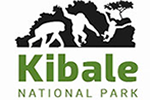The purpose of managing Kibale Forest has changed significantly since its gazettement as a Crown Forest in 1930 when the sole objective was exploitation for timber and charcoal. When the forest was gazzetted a national Park in 1993, management emphasized exclusive conservation with no human use allowed except for research and tourism. Today, under UWA, community interests are again an important and integral part of KNP management policy.
This is reflected in the following statement of purpose identified for the next 10 years and combining the above park values as follows;
“To conserve Kibale National Park, a high primate species diversity habitat including its unique, threatened and endangered species especially the Chimpanzees while providing ecosystem services for the development of the culturally diverse people around and beyond the borders of the Park”.
Conservation Importance
Tropical rain forest with the highest density of primates in East Africa as their habitat Kibale National Park is mainly a medium-altitude transitional moist evergreen forest with characteristics of both dry tropical and wet tropical rain forests.
Kibale Forest National Park supports an impressive diversity of forest species including mammals (as well as the thirteen types of non-human primates, insects, birds, reptiles and plants, some of which are threatened and/or endemic. KNP’s population of red colobus is believed to be the only viable population in the whole of East Africa (IUCN, 1988) while the chimpanzee is considered important for its ecological significance and tourism potential. Rare flora includes cycads and screw palms.
Home to unique, threatened and endangered animal and bird species such as the Red colobus and Green Breasted Pitta, African Grey parrot, Grey Crowned Crane respectively Kibale National Park supports at least nine species of animals which are considered to be globally threatened or nearly so. The species include Prigogine’s ground thrush (Turdus kibalensis) – a bird unique to KNP;
the endemic and rare Kibale ground thrush (Zoothera kibalensis); and the locally vulnerable red colobus monkey.
Home to the highest population of Chimpanzees in Uganda which is closest relative to man
Kibale National Park is the third largest forested national park in Uganda and supports nine animal species, including chimpanzees and red colobus, considered to be globally threatened or nearly so.
The size and contiguity of forest habitat make Kibale of particular value for biodiversity conservation.
It is a diverse botanical resource including important medicinal plants and ancestral varieties of commercial crops (e.g. coffee and banana). It also has a vast number of plant species whose
properties are yet to be discovered.
A tropical rain forest acting as a carbon sink, water catchment area and providing other ecosystem services Kibale National Park forms part of an important water catchment area feeding Lake George and the Albertine Rift Valley.
As such, it protects and filters the waters of the Dura and Mpanga rivers from pollution as they flow towards the Lake George Ramsar Site and the Queen Elizabeth Protected Area.
Additionally, KNP has a unique biophysical environment with varied scenery including beautiful crater lakes and hills. This, together with the forest, swamps, primates, birds and butterflies,
provides important prospects for ecotourism.
Home to high primate species diversity (13 primate species) Kibale fauna is documented, compared to many other forests in Uganda. Of particular interest are thirteen species of non-human primates (67% of the country’s total species). As well as chimpanzees, Kibale is home to red colobus monkeys, in what is probably their last viable population in Uganda (IUCN, 1988).
Fauna includes threatened and near threatened species such as elephant (Loxodonta africana), leopard (Panthera pardius), chimpanzee (Pan troglodytes), red colobus monkey (Colobus
badius) and L’Hoest’s monkey (Cercopithecus l’hoesti).
KNP is listed as one of the thirty Important Bird Areas in Uganda, falling under the categories A1, A2 and A3 (Byaruhanga, A. et al., 2001). At least 372 species of birds, occurring in 58 families,
have been listed. Those noteworthy due to their limited distribution or threatened status include: olive long-tailed cuckoo, western green tinker bird, Willcock’s’ honeyguide, collared apalis, red-
faced woodland warbler, white-bellied crested flycatcher, blue-headed sunbird, purple-breasted sunbird, dusky crimson-wing, white-naped pigeon, papyrus gonolek, white-checked olive back,
and the Kibale Prigogine’s ground thrush (Turdus kibalensis) which is not seen outside Kibale.
Education and Research
KNP is a valuable resource for research due to two factors. Firstly, the varied habitats and a broad species diversity, especially of primates, make Kibale an ideal location for study. Secondly, KNP has a long history of research that greatly facilitates new study. Makerere University Biological Field Station has been operating at Kanyawara since 1985 whilst Forest Department records of earlier research activities in Kibale date back to 1932.
Conservation of Chimpanzees
Kibale Forest is certainly worth protecting as it is home to the largest number (in Uganda) of our closest living relative, the endangered chimpanzee. The chances of seeing the chimpanzees in Kibale Forest are better then 90%. Making this the best place to see them in Uganda and Rwanda.
Kibale Forest is home to the largest number (in Uganda) of chimpanzees, our closest living relative. The forest has one of the highest diversity and density or primates and monkeys in Africa, totaling 13 species, including the red Colobus, black and white Colobus, blue monkey, grey- cheeked Mangabey, red tailed monkey, L’Hoest monkey, bush baby and Potto.
Important Tourism Destination
Though the scenic appeal of the region remains undiminished, the rising cost of chimp tracking, and the conversion of the old budget Kanyanchu River Camp to an upmarket tented camp, mean that the national park is no longer the mandatory backpacker destination it was a few years ago.
